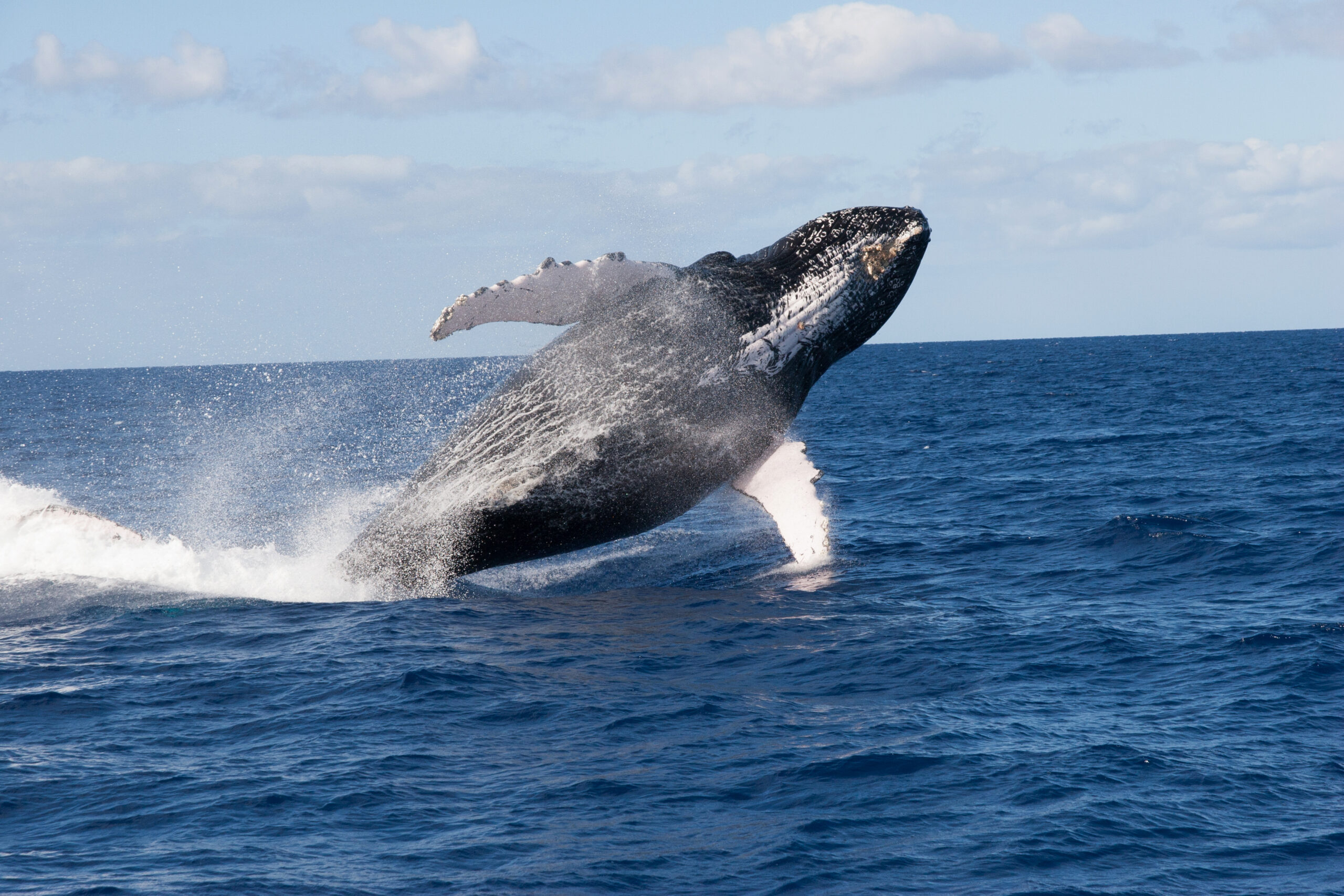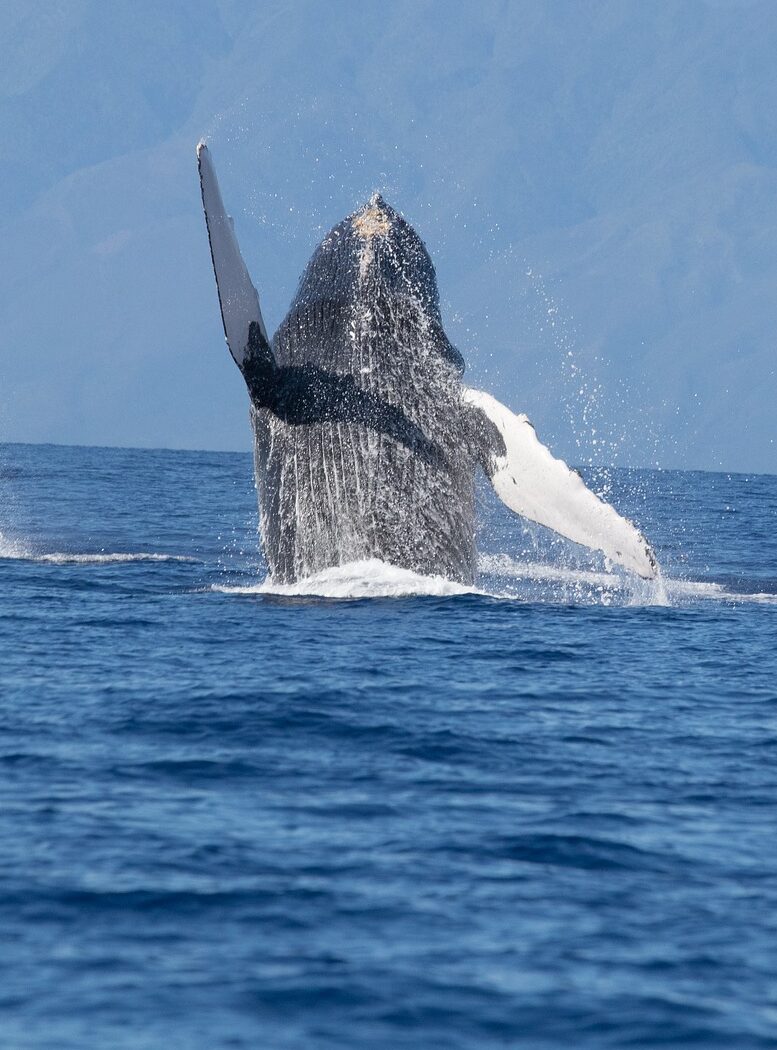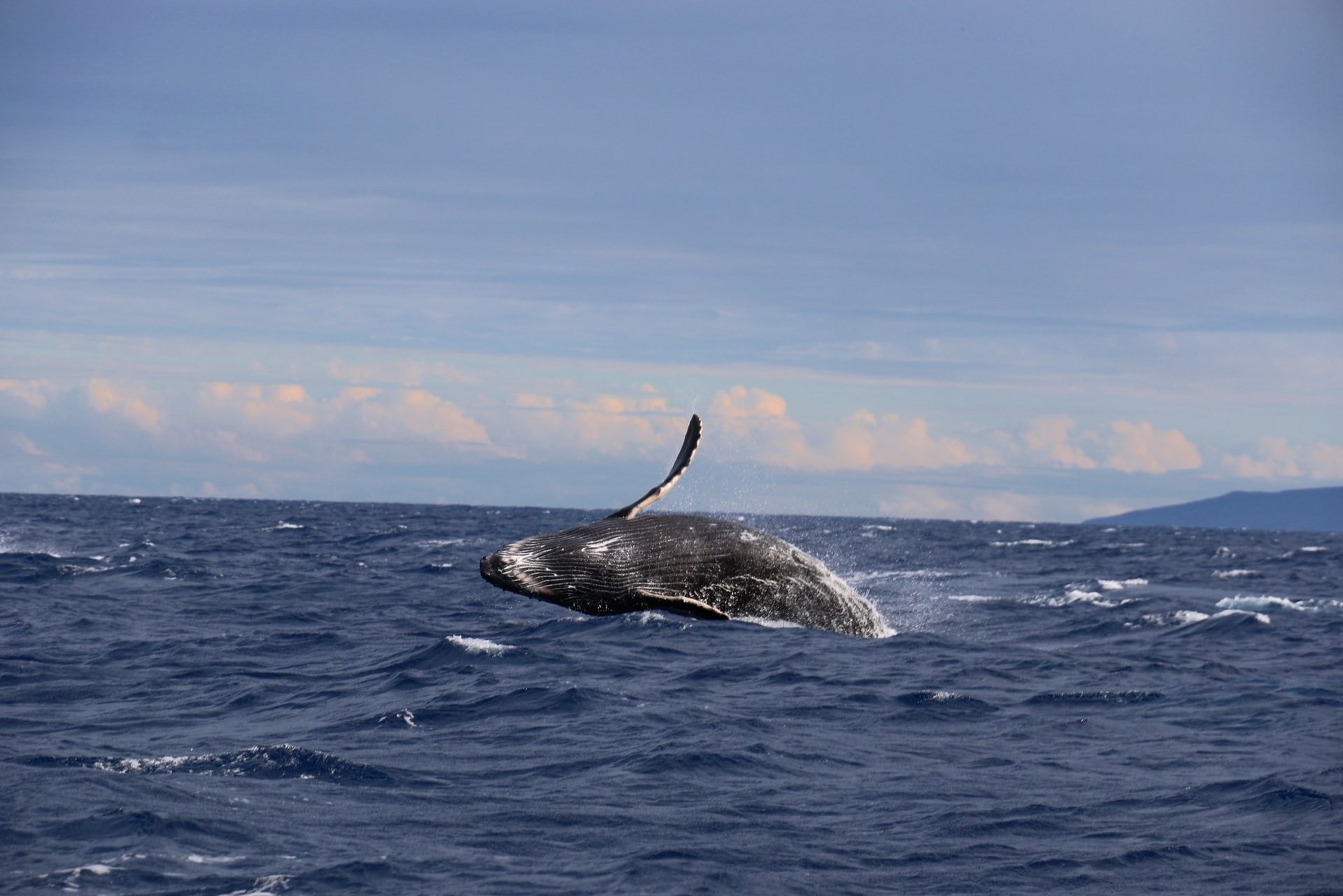Observe humongous humpback whales as they spout, breach, and play!

$125.00
Lowest price guarantee. Book direct and save.
Free Cancellations
Up to 24 hours before your tour.
The smallest group of any whale watching tour in Kona, with a max of 6 guests.
Listen to whales as they sing their songs and communicate underwater.
Enjoy complimentary water, Hawaiian juice, island sourced fruit, and other snacks.
If you don't see any humpback whales, you will receive a credit for a free trip.

About Humpback Whale Watching
Every winter the Humpback whales migrate from Alaska to Hawaii. They come here for the pregnant females to give birth in the warm waters of the Islands.
This area is just 25 minute boat ride from the Marina. This is the place to see the most whales. Others are found around Kona but in the Sanctuary, they’re everywhere. What are really special about this area is the Whales singing their songs. We have a hydrophone that’s receives many songs at the same time. It’s so amazing to listen to them as we watch for them to inspect our boat.
They can be seen performing a variety of spectacular behaviors each winter in Hawaii. Breaching, caring for the newborn with nursing behaviors, breeding, calving. These shows they put on will always be remembered as a highlight of your visit to Hawaii.
Just as our beautiful weather welcomes visitors from around the world, the warm and shallow waters surrounding the Hawaiian Islands are a favorite destination for humpback whales. Scientists estimate that two-thirds of the entire North Pacific humpback whale population return to Hawaii to breed, calve and nurse their young. Humpback whales travel great distances during their seasonal migration, the farthest migration of any mammal. They travel more than 3,000 miles from the Gulf of Alaska to Hawaii, then stay for a lengthy vacation, frolicking just off our shores and delighting spectators from December through April.
Humpback whales occur throughout the world in both coastal and open ocean areas. They are a highly migratory species, moving between breeding grounds in tropical and subtropical latitudes and feeding grounds in temperate and polar latitudes.
Included
Bring Your Own

Departure
Return
Restrictions